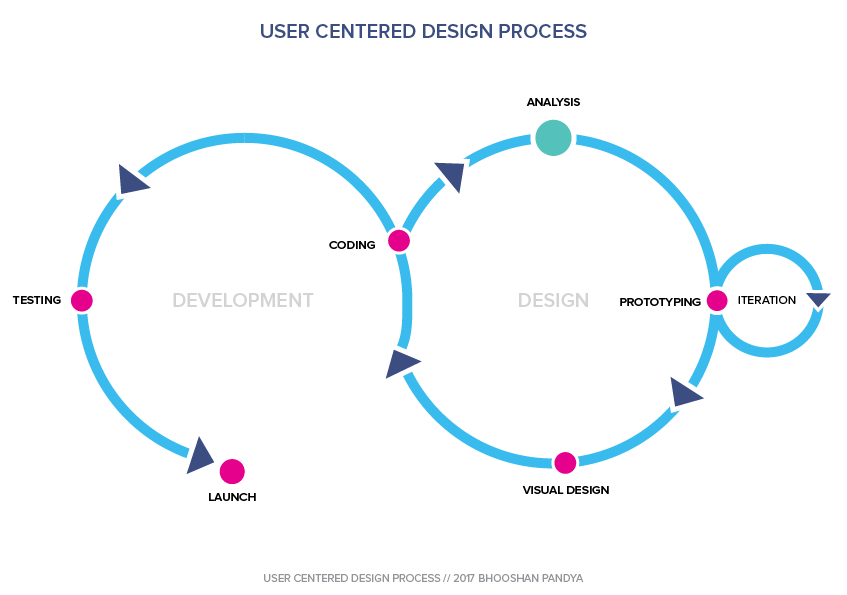The term “innovation” has become the favourite lexicon of corporate executives for any discussion relating to building a vision for their organizations, and obviously the startups who need to raise eyebrows for getting noticed and getting funded. ‘Innovation’ has an aura that sets our imagination rolling, often conjuring up an impression of an impossible modern future replete with robots, gadgets, and automative mechanisms. In short, it’s presumed that innovation would hand out an inventive gadget, service, or product that will make our lives a lot pleasurable with delightful interactions. For instance, skillfully using technologies such as AI to track your location and provide an accurate weather forecast or respond smartly to your question, putting wireless sensors so that you’re able to park your car smoothly. As I write this article there are numerous startups engrossed in experimenting with future technologies in shaping our landscape. Although the role of the ‘customer’ is being diminished somewhere between the business, the investors’ expectations & the discussion surrounding innovative technology. It’s not just a need to involve the target audience in an end-to-end product or service development activity but critically put the ‘customer’ in the centre of every innovation conversation.

Innovation Through Customer Insights
Organizations have acknowledged the significance of customer experience in sustaining future innovations, during and after any innovative idea is launched. However, the intrinsic drive of entrepreneurs to solve problems through technology has never gained so much visibility than in recent times as companies make attempts at product development for market dominance & financial gains. At times, this drives focus away from the customer experience and onto developing features that may miss the target audience invariably putting the entire roadmap of the product in jeopardy. For some startups or companies, the issue of relentless product development without managing customer expectations seems to be emanating from their internal challenges that are dictated more or less by corporate decisions. So for instance, on a strategic level, senior stakeholders choose a platform for driving automation for customer needs either without an understanding of the user-base or taking insights from a previous product launch. Eventually, by the time the “idea” percolates down to the tactical phase, one cannot rule out the complexity of its interaction and flow regardless of whether it’s solving any problems based on the experience that it delivers (or it doesn’t). Organizations back their leadership’s decisions of shaping the vision and it’s left upon the dev & design teams to implement the final product, within a strict timeline, despite the glaring loopholes and no understanding of the evolving user base. Designers obviously take a backseat.
Companies falter at transforming potent ideas into viable business opportunities or even innovate on their current product line simply because they tend to pigeon-hole their consumers in pursuit of launching the product with fewer resources. On the other hand, the strategic vision is signed-off by senior leadership and not allowed to evolve based on likely user scenarios and empirical evidence thus affecting its ambitions. Not only should designers be offered a seat at the discussion roundtable for shaping the strategic vision of the idea but moving forward, they must also be provided with the ‘air cover’ by senior leadership in influencing the approach on developing platforms for user interactions, oversee the code/programming to accomplish experience benchmarks, and other business decisions that are most likely to affect the overall delivery of the concept. This integrated approach with designers pushing through with the user feedback enables the team to set KPIs in measuring its success rate at every stage of the design & development process. On the other hand, businesses should seek to use automation technologies in offloading some of the critical, most dangerous tasks of human functionality in any given context, and not look to permanently replace human efforts altogether.
Connecting the users with the product idea becomes more conspicuous through the unfriendly user-interface at the beginning and later through faulty service interactions with the support staff and the users. In a nutshell, innovative ideas have been afforded their perpetual risk-free space to nurture and grow. It begins by involving the stakeholders and end-user who would prominently benefit from the idea if and when it becomes a reality and that’s where UCD comes into the big picture. Design teams often tackle usability issues “in house” but UCD forces organizations to push their visibility beyond target-users and onto the field where users can be observed first-hand. The insights which they would gather from the research activity could provide valuable insights, and in most cases even leave them surprised.
“In a Gartner Group study, usability methods raised user satisfaction ratings for a system by 40%; when systems match user needs, satisfaction often improves dramatically.”
(Bias & Mayhew, 1994)
The Complexity of Human Behaviour
The scope and difficulty for technology in addressing and decluttering human functionality are enormously vast but it wouldn’t have been possible without first drawing a clear picture of human needs. Although it’s not just the basic requirements that need to be fulfilled but alongside is also the complex issue of delivering a memorable experience to the users so they continue to remain engaged with the product or service platform. And therefore the objective of delivering a solution cannot be simply stated merely in terms of ‘meeting’ user requirements or technology. Humans possess varied forms of mental & physical ‘infrastructure’ that are culturally attuned to respond to challenges individually. For example, users with specific traits approach complex digital challenges such as navigating ‘task flows’ in a given context with varied perspectives – going through file menus, using the search options, using specific keywords for voice recognition, and so on. A result of a manifestation of traditional routes of physical interactions & mental models that must conform with digital and physical devices making the relationship between humans and digital interactions susceptible to failure.
Humans constantly expand their knowledge and simultaneously adapt their behaviour to harmonize with the exposure to various forms of interactions in their closest environment; it’s like a perpetual ‘work-in-progress’ system. Similarly, the varied technological platforms and apps, and relevant ecosystems evolve at a pace faster than the users might find themselves comfortable dealing with new interactions and features. The integration of digital technology within the realms of social structures and practices makes it harder to comprehend the enormity of any conflict occurring as a result of the ‘backroom’ development processes — one that doesn’t account for the emotions or behavioural attitudes of customers. Just one of the reasons why design, and in particular, user-centered design, needs to be integrated with mainstream platform development processes with a long term approach in clinically supporting human endeavours.

User-centrism is the crux of any design strategy, in short, all insights and assumptions are gathered, analyzed and tested with users, and prioritizing a few through the prototyping processes before testing and implementing them. In short, technology or any other form of digital or service interaction is built around the needs of the customers.
In a user-centric approach ‘users’ are at the crux of the development framework, prioritizing their requirements and making it easier to observe their latent behaviour. It’s also convenient to bring them to a brainstorming exercise and bounce back ideas at every stage rather than assuming what they prefer to do. The exchange of inventive ideas stems from user behavior analysis.
Conclusion
In elaborating further on design decisions, simple functions should explain the intricacy of the operations by interpreting user tasks. Customers base their decision-making instincts on the sentimentality of the interactions with digital systems (apps, voice devices), their physical environment (phones, stores, services) or a combination of the two. In today’s level playing field of smart apps and digital experiences, users are taken through a series of touchpoints engaging with the product or service through Human, Physical, or Digital scopes before their latent goals can be deemed to be achieved. Similar to a baton race where athletes pass the baton to the next team member until the finishing line is reached. The ‘delight’ that originates from the initial touchpoint has to continue through the discovery of exciting interactions until the journey is completed for the user to characterize it as a ‘memorable’ experience. A jumbled interaction, on the other hand, could cause a negative influence and severely threaten customer engagement even running a risk of the user abandoning the journey altogether.
In the given context, the user-centred design methodology could be deployed as a medium for the harnessing of user psychology through field research and insight gathering for innovative thinking. Expectations of users beyond numerous touch-points could be studied and potentially transformed for a digital technology or service framework with the aim to make an experience of achieving the goals seamlessly delightful and memorable, not broken.

